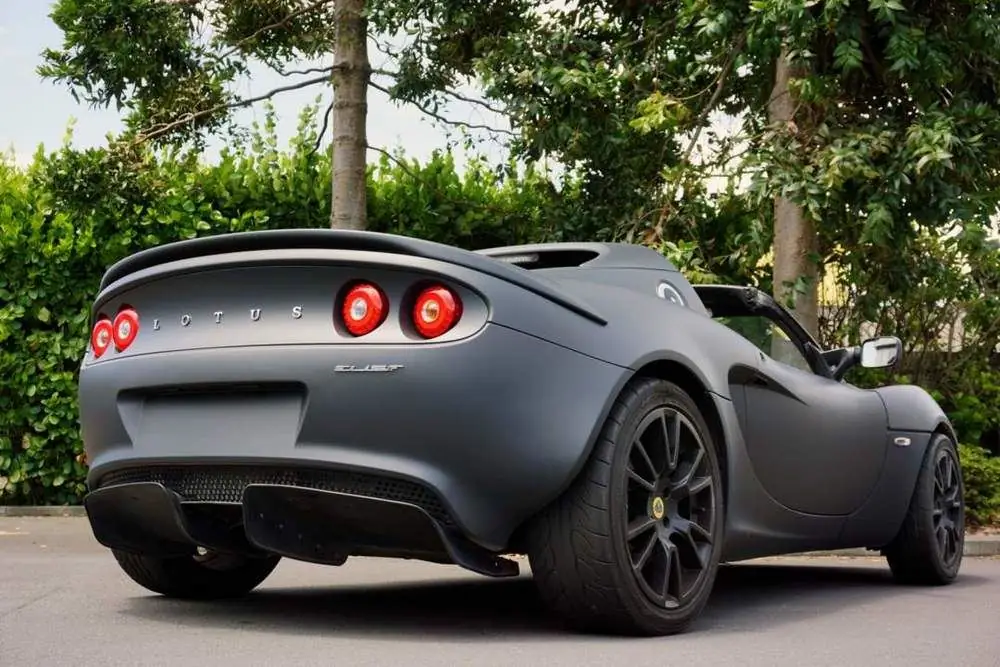2025 Author: Erin Ralphs | [email protected]. Last modified: 2025-01-22 21:14:16
Vehicle owners with experience know how important tire care is. Chemical reagents on winter roads, dirt, dust, solar ultraviolet - all this not only spoils the appearance, but also affects the durability of tires. One way to neutralize adverse effects on tires and return them to their former attractive appearance is to blacken rubber with factory or improvised means.
Processing at a service station or car wash
Many car services and car washes offer additional services to customers. Among them is the blackening of rubber. This service is relatively expensive, but the money spent is worth it. The scope of work is as follows:
- tires are thoroughly washed and dried;
- a special compound is applied to the rubber;
- tires are finally drying.
After professional treatment of the wheels, you can immediately go on the road by car. A durable protective film is formed on the rubber, protecting it from the effects of road chemicals and dirt,and the wheels look like they were just bought from a store.
Using shoe polish
Craftsmen have come up with many ways to process rubber. One of them is popular among fans to save money: do-it-yourself blackening of rubber with shoe polish. This tool really tarnishes and returns the original look to the wheels. But there are several disadvantages in this kind of blackening of rubber:
- missing glitter;
- long drying time, resulting in downtime;
- washes off quickly when driving in rainy weather.

There is only one advantage: shoe polish (or shoe polish) can be found in every home. It is enough to find a foam rubber sponge and spend a few minutes processing tires.
Application of glycerin
Glycerin is an affordable and cheap remedy that can be found in any pharmacy. It is often used to blacken rubber at home. To process 4 wheels, 100 ml of glycerin and the same amount of water are enough. After mixing, the solution is sprayed onto the wheels with a spray gun or rubbed with a soft sponge.

Home craftsmen experimentally found additional advantages. So, if you change the proportion of the water-glycerin solution:
- light matte finish with 1 part glycerin and 7 parts water;
- light shine with a ratio of 1 part of glycerin and 5 parts of water;
- greater fat and deeper black at 1 part ratioglycerin and 3 parts water.
With the availability of glycerin and ease of processing, the method has several significant drawbacks: at low humidity, the rubber dries and cracks, the tire quickly becomes covered with dust adhering to glycerin, and is quickly washed off with water at the first contact with it.
Using silicone oil
Most often, PMS-200 oil, which has an average viscosity, is used to process tires. Compared to those listed above, this rubber blackening agent is the most expensive, but the effect of its use is the most effective. One liter of silicone oil is enough for a whole year, even with frequent tire treatments. In addition to blackening rubber, it can be used to lubricate rubber seals. Another argument in favor of this tool is that it perfectly blocks the effect of solar ultraviolet radiation on rubber, thereby extending its service life.

Use laundry soap
Want to add a presentable car for one day or one trip? Use the cheapest remedy - laundry soap. It is great for blackening rubber, but the effect of its use does not last long. It is not recommended to frequently treat tires with laundry soap - it dries the rubber noticeably.
The procedure is simple and accessible to any car owner: pre-cleaned wheels are lathered with a clothes brush and washed with clean water. After the rubber dries, the effect will immediately manifest itself.

Factory blackening products
Buying a ready-made product is not a problem - they are on sale at any auto chemical store or in specialized departments of stores at gas stations. They are divided into two main types: glossy and matte. The former contain a lot of silicone and give the wheels a shiny look, but are quickly washed off in rainy weather. The latter are suitable not only for tires, but also for any other rubber parts of the car. Their effect is more protective than aesthetic.
Recommended:
Why is the Check Engine light on? Why does the check engine light come on?

In the age of modern technology, the technical characteristics of a car provide for the presence of a large number of electronics. Cars are literally stuffed with it. Some motorists do not even understand why it is needed or why this or that light is on. In our article we will talk about a small red light bulb called Check Engine. What is it and why does the "Check" light up, let's take a closer look
Painting a car with liquid rubber: reviews, prices. Which company to buy liquid rubber for painting a car: expert opinion

Liquid rubber for cars is vinyl. It is also called rubber paint. This coating option is a real alternative to car enamels, which are used today for painting cars. This technology is innovative, but today many motorists have already tested it
Liquid rubber for cars: reviews, price, results and photos. How to cover a car with liquid rubber?

Liquid rubber is a modern multifunctional coating based on bitumen. It is easier to cover a car with liquid rubber than with a film - after all, the sprayed coating does not need to be cut, stretched in shape, and then the bumps removed. Thus, the cost and time of work are optimized, and the result is qualitatively the same
Why does the car twitch while driving? Reasons why the car twitches at idle, when shifting gears, when braking and at low speeds

If the car twitches while driving, it is not only inconvenient to operate it, but also dangerous! How to determine the cause of such a change and avoid an accident? After reading the material, you will begin to understand your "four-wheeled friend" better
Why is gasoline becoming more expensive? Why is petrol becoming more expensive in Ukraine?

A joke is common among the people: if oil rises in price, then gasoline prices rise, if oil becomes cheaper, then the cost of fuel rises. What is really behind the rising price of gasoline?

